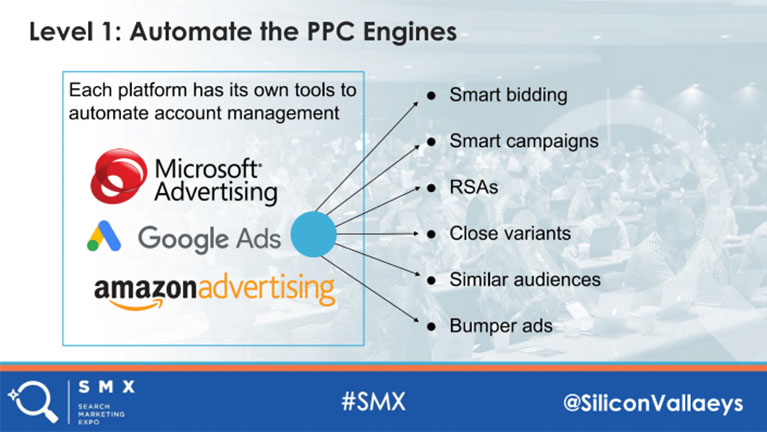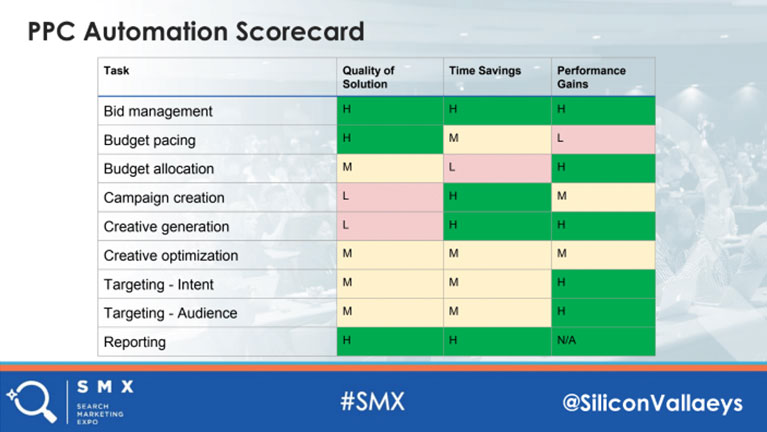Artificial Intelligence & Legal Advertising: What You Need To Know

Fashion, music, your toddler nephew and paid search advertising have this in common: If you haven’t spent much time with them lately, you’ll find that they’ve changed.
Maybe you last tried paid search ads, such as Google Ads or Microsoft (Bing) Ads, at your law firm a few years ago. It may be time to look at it again, because automation—specifically artificial intelligence (AI) and its machine learning capabilities—is radically changing how paid search works.
You can no longer dismiss AI as far-off, techie, science fiction talk. It’s starting to have a direct impact on your firm’s ability to find more clients, grow revenue and avoid getting left behind by competitors.
AI and machine learning bring increasing power to automatically analyze data and make adjustments based on which elements of your advertising are working the best.
To gather intelligence on how technological changes affect attorneys and the way law firms manage their legal marketing, Firmidable attended an advanced Search Marketing Expo (SMX) conference in Seattle this year.
One of the most popular sayings around the conference halls was, “Machine learning is like a toddler; it doesn’t know anything.”
Just like your nephew, it’s growing and changing.
We gathered five strategies you should know about building a thriving firm in the age of machine learning marketing—and three steps you need to carry out your plans.
5 Machine Learning Marketing & Paid Search Tips for Law Firms
In its current form, machine learning for pay-per-click (PPC) advertising is somewhat of a black box. By definition, machine learning is an application of AI in which computers analyze results and improve their own performance. In practice, you tell Google what you want and, mysteriously, Google spits out a result.
The system isn’t perfect—yet. You could end up paying for non-relevant leads. Imagine you’re a personal injury lawyer in Maine, but you get a flood of estate law leads from Texas.
All of this is disconcerting to advertisers accustomed to more control and getting good results. It’s a little like trusting a self-driving car.
The promise of AI, however, is that when it works well, it can get you more, better leads at a lower cost. The key is managing it right.
Here are the five tips for success:

No. 1: Take a Holistic Approach
We learned these rules directly from Google, via their Chief Search Evangelist, Nicolas Darveau-Garneau.
Darveau-Garneau said that even if Google Ads became 100% automated, the decisions made by people—like legal marketing strategists—will still have a significant impact on the returns delivered from paid search.
You start by measuring your marketing more holistically. Don’t focus only on the cost of a lead at the last click the user makes before calling your firm or filling out a chat form. Look at how your different advertising channels work together.
For example, ads on YouTube may not drive many direct leads to you. But they may provide value by increasing awareness of your firm among searchers on Google. To set the right strategy in an AI world, take it all in.
No. 2: Choose the Right Goal
You have to decide your ultimate goal: Is it more leads? New clients? More cases? Better cases?
With machine learning, you may be able to determine who likely has a good case—before they even contact you—and reach them with your online ads.
This requires adding some offline information to your online data. When you tell the machine as much as possible about how your law firm functions, it can make the best decisions.
No. 3: Choose the Right Measuring Tool
Next, you’ll need to decide which metrics to use to gauge success.
Is it return on investment from your paid search ads themselves? Is it overall revenue for your firm?
No. 4: Choose the Right Time Frame
You need to think long-term, possibly compiling data from your advertising campaigns for two to three years.
A 30-day window would be too short because the full—holistic—effects of a new client gained aren’t visible yet. That client could refer multiple other clients down the road, increasing the value of your campaign.
You also need to consider cross-marketing different legal practice areas you offer. For example, a person who initially comes in with a workers’ compensation claim might eventually have a Social Security Disability or long-term disability claim because they can’t work.
The full effects of your efforts aren’t clear until all of that is taken into account.
No. 5: Focus on Reaching the Best Clients
Machine learning could help you to reach clients based on how well suited they are for your practice.
Paid search ads are based on bidding for different keywords and other characteristics. You could bid higher depending on the age of ad recipients, or based on their wealth. You could bid less for a demographic less likely to bring in your firm’s ideal kind of case.

RELATED
Tech Game Changers in Law Firm Marketing
3 Steps to Executing Your Firm’s AI Marketing Strategy

At the digital marketing conference, we also heard from Frederick Vallaeys, former Google AdWords Evangelist and founder of the paid search management tool Optmyzr.
He charted a three-step process that advertisers need to take advantage of machine learning and automation in general.
Step 1: Set Goals
It always starts with setting goals. Some things haven’t changed.
This is just as important as it was when everything was done manually in Google Ads, previously known as Google AdWords.
Step 2: Choose What to Automate
The next step is to pick which kinds of computer automation you want to put in place.
Right now, Vallaeys says, the most advanced use of machine learning in paid search advertising is in the realm of bidding.
Paid search has always involved bidding on the keywords you want to show up for on web searchers’ screens. You can also use machine learning to bid on factors like your target cost per acquisition (CPA), which is the ultimate price you pay to get a lead in the door.
You tell Google up front what you want to pay per lead, and it’ll do its best to meet that goal.
The other popular form of automation is automated reporting on the results of your campaigns. A human still needs to analyze those reports, but compiling data no longer needs to be done by hand. Not breaking news.
Step 3: Teach the Machines
Next, you need to teach the computer system.
Yes, the machines are smart, but they need guidance. In Google, that means collecting data on successful ads, the ones that inspired phone calls, form submissions and live chats. Marketers call those conversions.
This is how the computers learn which keywords and audience targeting are working. The more conversions, the more data, the better the machines do—and the better the results for law firms.
The machines can analyze hundreds or even thousands of data points. They can make connections humans may not be able to see or determine, changing how they bid on ads.
Take an example using a keyword: If somebody searched “personal injury lawyer phone number” and the conversion goal is a phone call, Google may bid higher for that search term than it would for, say, a pre-planned keyword like “personal injury lawyer.”
Machines also need time to learn. For Google, that means taking two to three weeks to run tests of automated bidding so the system can polish its results.
Human Supervision (Still) Required

You can’t set up automation in your paid search campaigns, then let it run and ignore it.
As advanced as the technology is at finding opportunities you wouldn’t otherwise see, humans must monitor the bidding on paid search ads and make adjustments.
For example, you could set the goal of spending $50 per lead. But that doesn’t automatically mean your cost per acquisition will be $50 when you check the campaign a week later.
If the system doesn’t have enough data, it may be returning a higher cost per lead. Or it’s not bidding on anything—so you ended up not spending any money, or running any ads, that week.
Machines can’t troubleshoot a campaign. If the computers are sending you poor quality leads, you need a human to investigate why those ads aren’t reaching the right people.
You also need human digital marketers to help you apply the insights you gain from machine learning in paid search to other channels of your marketing.
An example: You could run a dynamic search ad (DSA) paid search campaign that doesn’t use exact keywords but instead matches user queries with text on the landing pages for your ads.
In the process, Google could discover new keywords you didn’t consider before. Your search engine optimization (SEO) team could then use those keywords to bolster your website’s power at attracting new clients organically (without buying ads).
Another way that humans—like the team at your legal marketing agency—can maximize your results is by looking for opportunities to combine campaigns, so you get more data for Google to use.
This could mean combining two low-traffic campaigns with similar goals and costs per lead. Just make sure you’re not merging campaigns that differ too much in their core strategy, such as ads that target potential clients who are earlier in the process of hiring an attorney, or ads for people later in the process.
The age of artificial intelligence will bring opportunity—and change—to law firm marketing and law firm growth. You don’t have to navigate this alone.
To get the most from the new technology, work with a legal marketing firm like Firmidable. Talk to us today.
Firmidable has been a national expert in legal marketing for almost 30 years. It brings law firms customized, data-driven marketing strategies and services, including online and traditional media for a wide range of legal practices. From Maine to Hawaii, it has transformed the lives of attorneys—and their clients.
